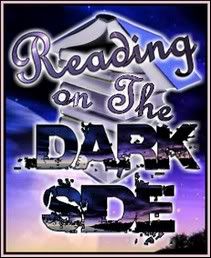 March 20th is the Spring Equinox, a time when we pagans celebrate Ostara, the pagan festival to Eostre/Ostara. On the spring and fall equinoxes, day and night are of equal lengths. Ostara celebrates the coming of spring, new growth and fertility. The word "Ostara" comes from the German mythologist Jacob Grimm (d. 1863), who said this was the Old High German name for the Easter festival. (All other languages use a variant of "Pascha," a Greek adoption of the Hebrew for Passover, for the Christian holiday.) . Grimm in his Teutonic Mythology maintained that "Ostara, Eástre, was goddess of the growing light of spring."
March 20th is the Spring Equinox, a time when we pagans celebrate Ostara, the pagan festival to Eostre/Ostara. On the spring and fall equinoxes, day and night are of equal lengths. Ostara celebrates the coming of spring, new growth and fertility. The word "Ostara" comes from the German mythologist Jacob Grimm (d. 1863), who said this was the Old High German name for the Easter festival. (All other languages use a variant of "Pascha," a Greek adoption of the Hebrew for Passover, for the Christian holiday.) . Grimm in his Teutonic Mythology maintained that "Ostara, Eástre, was goddess of the growing light of spring." The English monk and historian Bede (d. 735) recorded that the Anglo-Saxon goddess Eostre had a festival lasting several days, and that this name was adopted in England for the Christian holiday of Easter, which falls on the Sunday after the full moon following the spring equinox. The spring equinox is one of the four great solar festivals of the year. Day and night are equal, poised and balanced, but about to tip over on the side of light. The spring equinox is sacred to dawn, youth, the morning star and the east.

For Wiccans and some other Pagans, Ostara is the day when the Goddess and God (variously identified as Mother Earth and the Green Man or the Young Maiden and Sun God) join in sacred marriage. The Goddess will conceive, and give birth in nine months. The increased growth and strength of nature in the spring is due to the rising power of the Goddess and God. Although we saw the first promise of spring at Candlemas in the swelling buds, there were still nights of frost and darkness ahead. Now spring is manifest. Demeter is reunited with her daughter, Kore (the essence of spring), who has been in the Underworld for six months and the earth once again teems with life. The goddess shows herself in the blossoms, the leaves on the trees, the sprouting of the crops, the mating of birds, the birth of young animals. In the agricultural cycle, it is time for planting. We are assured that life will continue.
Pagans celebrate Ostara with various rituals celebrating fertility, nature and new growth. Egg races, egg hunts, egg eating and egg painting are common activities. A man and a woman might be chosen to act out the roles of Spring God and Goddess, playing out courtship and symbolically planting seeds. Neopagans also celebrate by eating fresh spring foods like sprouts, dandelion greens, and nettles. Some undertake a fast during this period, to clear away the toxins of the winter. Many Wiccans plant an herb garden (for later use in spells) on Ostara. Home altars might feature spring flowers, seeds, jasmine or flowery incense, and the gemstone of jasper. Also according to Jacob Grimm, the white maiden of Osterrode, was said to appear with a large batch of keys at her belt, and stride to the brook to collect water on Easter morning. Cross buns were of course baked and eaten. The cross is symbolic of the rune Gebo and the buns also represent the sun wheel.




No comments:
Post a Comment